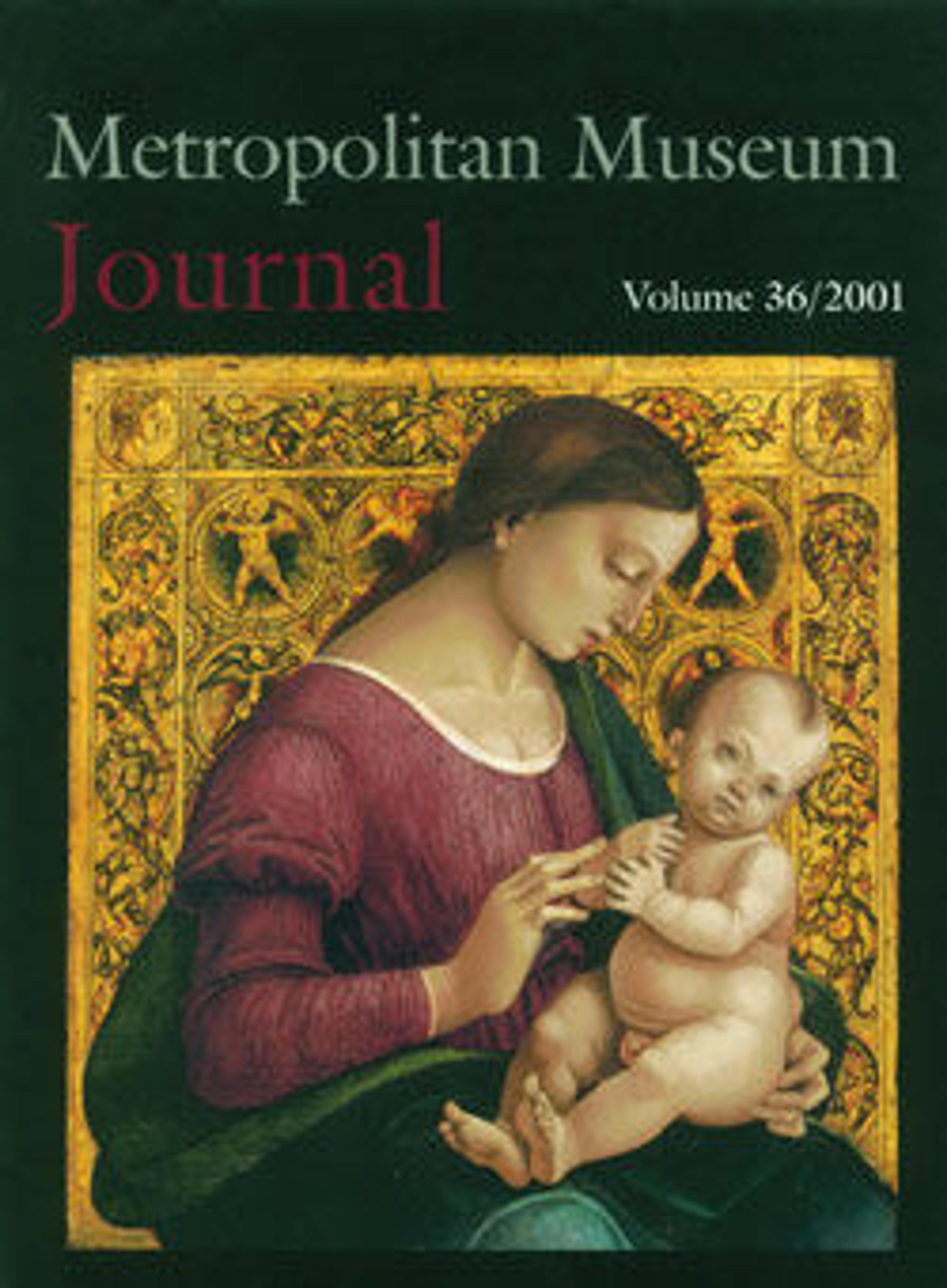Kaftan
The original linen coat (caftan), preserved in part from the neck to the bottom of the hem, is made of finely woven linen. A decorative strip of large-patterned silk is sewn along the exterior and interior edges of the caftan. A minute fragment of fur preserved as the caftan's interior attests to its fur lining. The woven patterns on the silk borders of the caftan include motifs such as the rosettes and stylized animal patterns enclosed within beaded roundels, which were widespread in Iranian and Central Asian textiles of the sixth to ninth century. The colors used in the textile include a now-faded dark blue, yellow, red, and white on a dark brown ground. The decorated silk fabrics are a compound twill weave (samite in modern classification) and the body of the garment is plain-weave linen. Two slits running up the back of the caftan make it particularly suitable as a riding costume.
Artwork Details
- Title: Kaftan
- Date: ca. 7th–9th century CE
- Geography: Caucasus region
- Culture: Alanic
- Medium: Silk, linen, fur
- Dimensions: 75 1/2 in. × 57 in. × 44 in. (191.8 × 144.8 × 111.8 cm)
- Credit Line: Harris Brisbane Dick Fund, 1996
- Object Number: 1996.78.1
- Curatorial Department: Ancient West Asian Art
More Artwork
Research Resources
The Met provides unparalleled resources for research and welcomes an international community of students and scholars. The Met's Open Access API is where creators and researchers can connect to the The Met collection. Open Access data and public domain images are available for unrestricted commercial and noncommercial use without permission or fee.
To request images under copyright and other restrictions, please use this Image Request form.
Feedback
We continue to research and examine historical and cultural context for objects in The Met collection. If you have comments or questions about this object record, please contact us using the form below. The Museum looks forward to receiving your comments.
